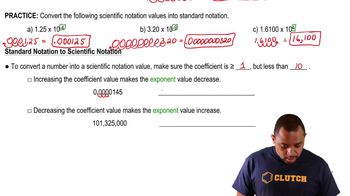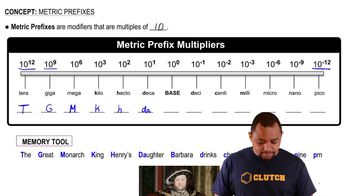Textbook Question
Use the prefix multipliers to express each measurement without exponents. b. 22×10−15 s
4
views

 Verified step by step guidance
Verified step by step guidance



Use the prefix multipliers to express each measurement without exponents. b. 22×10−15 s
Use the prefix multipliers to express each measurement without exponents. d. 3.5×106 L
Use prefix multipliers to express each measurement without exponents. a. 38.8×105 g c. 23.4×1011 m d. 87.9×10−7 L
Use scientific notation to express each quantity with only base units (no prefix multipliers). a. 4.5 ns b. 18 fs c. 128 pm
Use scientific notation to express each quantity with only base units (no prefix multipliers). d. 35 μm
Use scientific notation to express each quantity with only base units (no prefix multipliers). a. 35 mL b. 225 Mm c. 133 Tg d. 1.5 cg